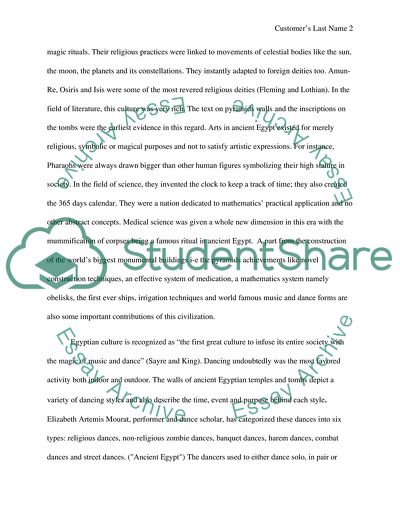Ancient Egyptian Dance Culture Article Example | Topics and Well Written Essays - 1750 words. https://studentshare.org/culture/1773394-egyptian-culture-and-dance-3000bc-0
Ancient Egyptian Dance Culture Article Example | Topics and Well Written Essays - 1750 Words. https://studentshare.org/culture/1773394-egyptian-culture-and-dance-3000bc-0.


